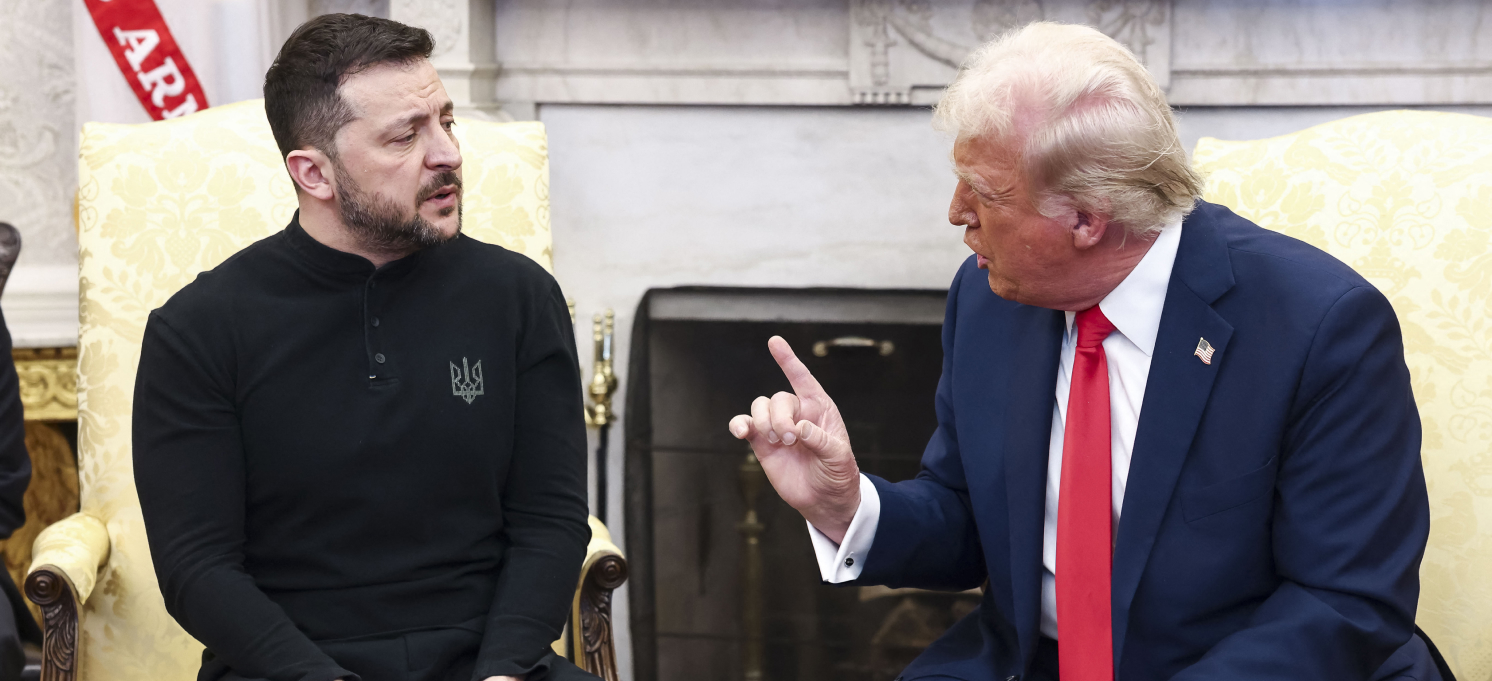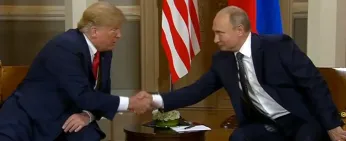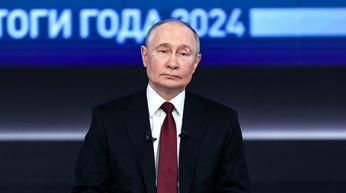
Nationalization campaign charges ahead
Hello! Welcome to your weekly guide to the Russian economy – written by Alexander Kolyandr and Alexandra Prokopenko and brought to you by The Bell. This week our top story is a look at how Moscow’s Domodedovo airport became the latest target for an escalating nationalization campaign. We also look at financial trouble in Russia’s metals and mining sector.
Raid on a Moscow airport brings nationalization to new heights
A new chapter has opened in the ongoing campaign to seize private property for the state and individuals close to the authorities. Domodedovo airport, Moscow’s second largest, is under threat of imminent nationalization. It marks the third attempt to seize the prime asset over more than two decades of wrangling. Now, the invasion of Ukraine has given the authorities a new justification to try to seize it.
What’s going on?
The Moscow Region Court of Arbitration this week seized the property of the Domodedovo group and stocks and shares belonging to its beneficiaries, Dmitry Kamenshchik and Valery Kogan. The court action followed a suit from the Prosecutor General’s office, which alleged that Kamenshchik and Kogan hold foreign citizenships. This violates a law prohibiting foreigners from managing and owning strategic enterprises without prior consent from the government commission for control over foreign investments.
The details of the lawsuit have not been published, but Vedomosti and Kommersant have reported on the contents. Prosecutors claim that Kamenshchik has either residency or citizenship of Turkey and the United Arab Emirates, while Valery Kogan is allegedly an Israeli citizen. Russia doesn’t list any of those countries as “unfriendly” — but that has not stopped the case progressing. All that matters is that they have foreign passports and the owners allegedly deceived the authorities by failing to declare their second citizenships when transferring the asset to Russian jurisdiction. They are also accused of siphoning off profits abroad.
The authorities have also made political accusations against the owners, accusing them of “following the aggressive policies of Western governments to inflict a strategic defeat on the Russian Federation by damaging its economy. To do this, they sabotage measures to develop and modernize airport infrastructure. Budget funds allocated by the state are spent without controls, and end up stolen.”
The Prosecutor General’s office demanded the group’s entire assets be passed to the state — an almost certain outcome.
Third time lucky?
Domodedovo’s (soon-to-be former) owner, Dmitry Kamenshchik has a reputation as extremely tough, secretive, and successful. He is also a veteran of campaigns to renationalize the airport — with this being the third attempt to prise the airport from his grasp since Russian President Vladimir Putin came to power. In 2003, a Moscow Region court ruled that Domodedovo’s initial privatization was illegal, but the federal government sided with the businessman and Vladimir Putin personally spoke up for him.
In 2011, after a terrorist attack at the airport killed 37 people, Kamenshchik faced a criminal case for failing to meet safety standards, spending eight months under house arrest in 2016 before the case was dropped. Throughout this period, the potential sale of the airport was a recurring topic, with the most plausible purchaser seen as Roman Trotsenko, who owns dozens of regional airports and was also an advisor to influential Rosneft boss Igor Sechin.
Kamenshchik was prepared to go to jail rather than give up his business, at one time using Kommersant to address investigators, telling the newspaper: “Why run? I know that the truth is on my side!” On that occasion, the Prosecutor General sided with Kamenshchik.
Why it matters
The targeting of Domodedovo is the first significant nationalization attempt this year amid an escalating campaign. Earlier instances were typically politically motivated or a response to spontaneous protest, such as in the case of the Bashkir Soda Company in 2020 — a landmark case that challenged its privatization in the 1990s. But since Russia invaded Ukraine, there have been dozens of nationalization attempts.
First, authorities started nationalizing the assets of foreign companies and businessmen who had left Russia — Danone, Carlsberg, Efes, Rolf, Makfa. And then those allegedly not meeting arms procurement targets, less known names like Metafrax and Klimovsk Specialized Ammunition Plant. In many cases details were scant, with the nationalization pushed through via forced bankruptcy with relatively small assets.
Such corporate raids have also been particularly common in Russia-occupied regions of Ukraine, where commercial assets and real estate were seized from people who had fled or had not opted to get a Russian passport. Although it has not yet been used, Russia also passed a law that allows assets to be confiscated from those who publish what authorities deem “false information” about the Russian army and the invasion of Ukraine.
Usually the newly nationalised companies are then handed to people close to the authorities. The state plans to generate 80 billion rubles ($800 million) of income from the sale of government assets this year. Last year nationalization raised some 130 billion rubles — 17 times more than in 2022, and around three times more than between 2017 and 2019.
There is no end to the flow of lawsuits being backed by either the state prosecutor or, occasionally, the anti-monopoly service. In January alone the Prosecutor General went after the following organizations, alongside Domodedovo airport:
- Salavatneftemash oil equipment plant, whose owner turned out to be a Lithuanian citizen and left Russia
- Plots belonging to the Epron-8 construction company in Adler, which was privatized in 1993. The land is located on a site where a highway is planned to be built.
- The Petersburg oil terminal, where the deceased owner's heirs have French and German citizenship.
- Two yacht clubs on the shore of Uliss Bay in Vladivostok.
- Grain trader Rodnie Polya, whose owners have also been accused of violating the foreign investment law.
Why the world should care
This flurry of nationalizations should not be viewed as a reversal of the controversial privatization of the 1990s. Most often, new private owners are quickly found. It cannot simply be considered a distribution of assets in exchange for future loyalty — the new owners are already super-loyal and connected to the corridors of power. Nor is it just a means of topping up the treasury — the planned revenue is too small to cover the demands of Russia’s military budget. It isn’t even a way of satisfying the appetites of officials and state managers, who do not always get what they want. In reality, it is a combination of all of that, as well as a tool to ensure obedience from owners of businesses and real estate across the country. This further degradation of private property rights — never particularly stable in Russia at any time — is another legacy of the war. Most likely, the forced redistribution of assets will only accelerate, largely due to well-connected business owners struggling under high interest rates, looking for sources of new income. The consequences for targeted owners are obvious now, and will become visible in the wider economy when the state again seeks — and struggles — to attract private capital.
Mining and metals queue up for state support
Falling global demand, sanctions and high interest rates are forcing major industrialists to seek state support to stave off the threat of mass bankruptcies.
- “The good times are over at last,” said Andrei Savelyov, deputy director of the metallurgy department at the Trade and Industry ministry last week. He estimates the profitability of metals companies still in the black has fallen by 10%, while for some electrometallurgical plants and vertically integrated companies it is “near zero” or even negative.
- Global demand for steel — and therefore prices — are falling due to wider economic problems, primarily in the construction industry in China, but also in Europe. If the United States pursues its threatened trade wars with China and Europe, that would further depress demand.
- According to the World Steel Association, steel production from Jan-Nov 2024 in Russia was down 7% to 64.8 million tons. The association expects demand for steel in Russia to have fallen from 44.6 million tons in 2023 to 44.2 million tons in 2024 and decline further to 43.3 million tons in 2025, as quoted by Forbes. “The main factor limiting demand is the high level of interest rates over an extended period and, as a consequence, limited financing,” Severstal, a Russian metals major, said. Company owner Alexei Mordashov publicly criticized the Central Bank for its aggressive rate hikes.
- The trade and industry ministry is looking at the idea of changing the formula for excise tax on liquid steel, meaning metal producers pay less into the budget. Last year they contributed 64 billion rubles and the projected budget for 2025 anticipates 69 billion rubles.
- Falling demand in Russia is mainly due to problems facing construction companies as they grapple with high interest rates, suggested Maxim Khudalov, head strategist at the Vector Capital investment company.
- Late last year, deputy prime minister Alexander Novak called for measures to support the coal industry, with mining companies facing bankruptcy. In such cases, VEB.RF is likely to play a management role. Kommersant sources have identified the Inskaya mine, which is entering bankruptcy proceedings with debts of 230 million rubles, as a likely first candidate.
- Coal exports in 2024 were deeply unprofitable, largely due to increased logistics costs. Transportation costs accounted for 83% of the price of coal exported through Vostochny, 80% of exports via Taman and 79% via Baltika. Export duties, introduced by the government in 2023 to protect the domestic market up to the end of 2024, were another pressure point, especially since the tariff was tied to the ruble/dollar exchange rate. The measures for thermal coal and anthracite were effectively nullified by the authorities, repeatedly extending the moratorium and resuming it again during the year.
- The coal industry, according to the Energy Ministry, employs 650,000 people, mostly in 31 single-industry towns — therefore the closure of any one enterprise could be a death blow to an entire community.
Why the world should care
Two former Russian export heavyweights — coal and metals — are in a precarious position due to a combination of factors: falling external demand and self-inflicted internal issues caused by the war. There’s no doubt that the authorities will come to the aid of miners and metalworkers, but budget resources are stretched. For a time, enterprises can be kept alive via tax breaks and concessions, but if high interest rates remain for a long period, this may turn out to be palliative care rather than a miracle cure.
Figures of the week
From Jan. 21-27, weekly inflation slowed from 0.25% to 0.22%, according to the Economic Development Ministry. Annual inflation increased from 9.92% to 9.95%. Food prices were up 0.36%, non-food goods were up 0.03%. Despite a slight slowdown week-on-week, the overall picture remains pro-inflationary.
Inflation expectations in January reached its highest level since Dec. 2023 at 14%, according to a survey by inFOM for the Bank of Russia. At the same time, among those who have savings, inflation expectations fell from 12.7% to 12.6%. Among those without savings, expectations climbed from 14.9% to 15.4%. When business and the public expect high inflation, it becomes harder for the Central Bank to ease its monetary policy. They are even hinting that further interest rate raises could remain on the agenda.
In Dec. 2024, Russian banks saw their corporate loan portfolio decrease for the first time since January — nudging down 0.2% to 87.8 trillion rubles. The total volume of corporate loans in 2024 increased 17.9%, compared with 20.7% in 2023.
There was a sharper fall in the consumer loan portfolio — down 1.9% to 14.1 trillion rubles. Over the year, the total value of consumer loans went up 11.2%, compared with 15.7% in 2023, according to the Bank of Russia’s review of the banking sector. High interest rates and increasing demand for loans played a role in the fall in consumer lending in December, but not for corporates, which dropped due to the repayment of old foreign-currency loans.
Further reading
Unprecedented Defense Ministry Purge Sparks Concern in Russian Elite
Lukashenko’s Seventh Term Will Be His Least Predictable Yet
Divergent economic experiences of war: The rich get richer and the rest don’t





